Preparedness
Ohio Homeowner’s Decisive Action Ends Intruder Threat

In the quiet hours of an early Friday morning, a tense encounter unfolded in Englewood, Ohio, resulting in the death of an alleged intruder. The incident occurred around 2 a.m., when 43-year-old Matthew Culham was reportedly shot and killed after a confrontation with a homeowner.
The series of events began when the residents of the home, a couple, were alerted by strange noises emanating from their backyard. Concerned, they promptly dialed 911 to report the suspicious activity. During the call, the girlfriend informed the dispatcher that her boyfriend was retrieving a firearm to investigate the situation.
As the call progressed, the unsettling sound of three gunshots was captured by the dispatcher.
When police arrived on the scene, they discovered Culham’s body lying in the yard. Englewood Police Chief Corey Follick provided insight into the incident, suggesting that the homeowner was likely attempting to assess any potential damage or theft when Culham allegedly charged at him.
Follick noted, “Most burglars, if they determine that a home is occupied, once they’re detected, they normally flee the area…[but] this subject stayed on their property and confronted the homeowner when he was out double-checking to see what all may have been damaged or stolen from his property or who the person was on his property.”
This incident highlights the unpredictable nature of home intrusions and the critical importance of being prepared for such encounters. It serves as a stark reminder that not all intruders will flee when detected, and homeowners must be ready to protect themselves if necessary.
Watch a local news report about the incident below:
Let us know what you think, please share your thoughts in the comments below.

Off The Grid
10 Things to Pack in a Get-Home Survival Bag
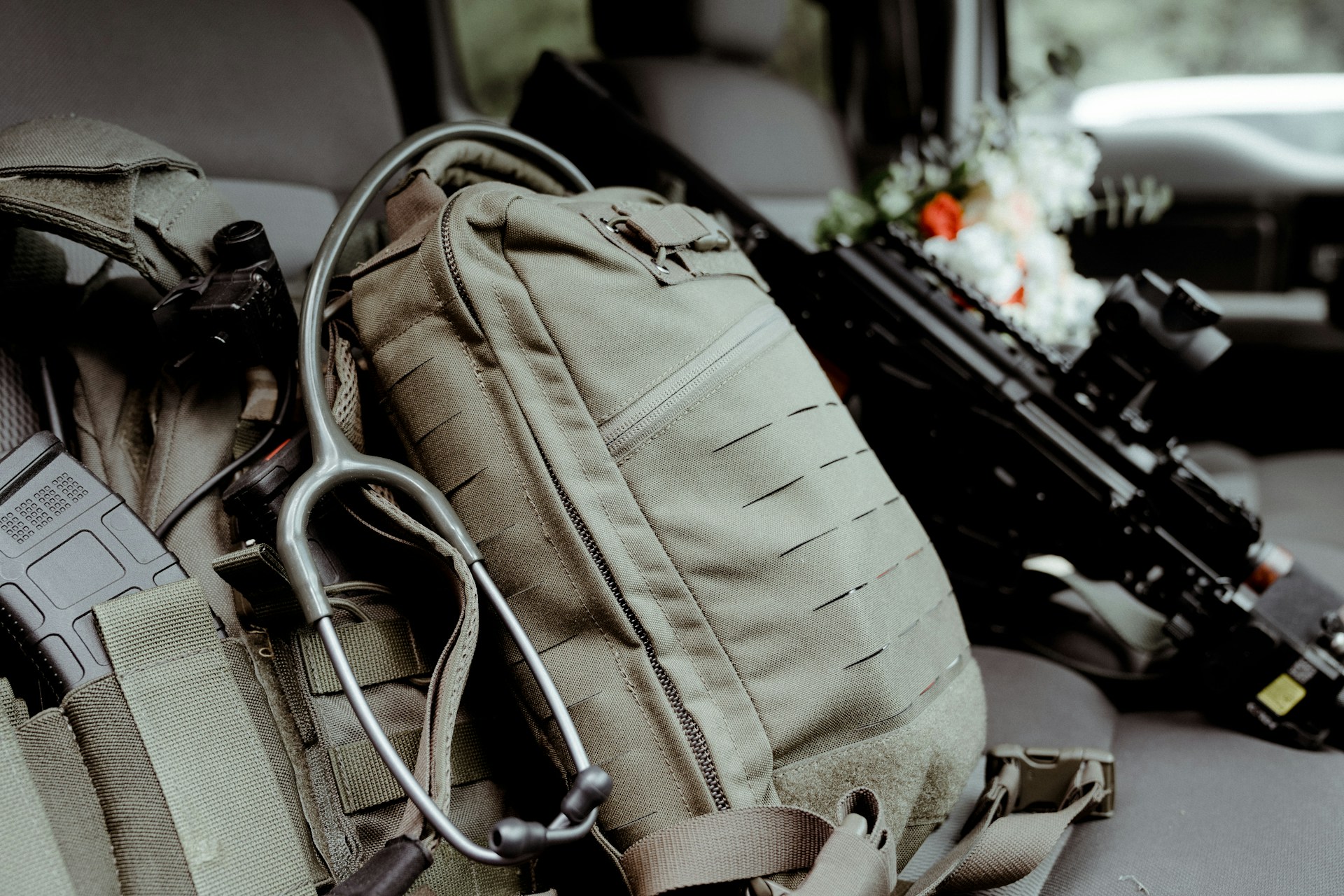
A get-home bag is one of the most overlooked but most valuable pieces of emergency gear you can own. It is not designed to help you survive for days in the wilderness. Instead, its purpose is simple. It helps you get home safely during an unexpected crisis. Whether you are stuck at work during a blackout, stranded on the road in a storm, or forced to walk when transportation shuts down, a well-packed get-home bag can make the difference between stress and confidence.
Here are ten essential items to include so you can get home quickly and safely no matter what happens.
1. Water Bottle or Hydration Pouch
Staying hydrated is essential when you may need to walk long distances. A durable water bottle or collapsible hydration pouch works well because you can fill it anywhere before starting your journey. Dehydration slows reaction time and drains energy, so water should always be at the top of your list.
2. Energy Bars or Quick Snacks
You need steady energy to stay focused. High-calorie snacks like protein bars, trail mix, or peanut butter packets keep your body fueled without taking up space. They require no cooking and last a long time in any weather.
3. Compact Flashlight
A small LED flashlight helps you navigate safely if darkness hits. Power outages, tunnels, garages, and unlit streets can become dangerous without proper light. Pack a lightweight flashlight and keep it accessible.
4. Spare Batteries
A flashlight or portable radio is useless without backup power. Include a small set of extra batteries to keep your gear running for hours. Store them in a plastic bag so moisture cannot reach them.
5. Multi-Tool
A compact multi-tool gives you pliers, a blade, screwdrivers, scissors, and other essentials in a single device. It is one of the most versatile items you can carry and handles small repairs, cutting tasks, and emergency adjustments with ease.
6. Emergency Mylar Blanket
A mylar blanket helps you retain body heat when temperatures drop. It weighs almost nothing and folds into the size of a wallet. Whether you are dealing with cold weather or unexpected snow, this simple item prevents heat loss and keeps you more comfortable.
7. Small First-Aid Kit
Minor injuries can become major setbacks during an emergency walk home. A basic kit with bandages, antiseptic wipes, gauze, adhesive tape, and pain relievers can prevent infections or make a long walk safer and less painful.
8. Map of Your Area
Do not rely only on your phone. Battery failure, poor signal, or damaged devices can leave you without navigation. A simple paper map of your local routes allows you to find alternate paths home if roads or bridges are blocked.
9. Lightweight Rain Poncho
Weather can change without warning. A poncho keeps you dry and warm, prevents hypothermia, and protects your gear. Wet clothing quickly drains your energy and slows your movement, so staying dry is a priority.
10. Cash
Digital payments fail during power outages or network problems. Small bills can help you buy water, food, or transportation when cards do not work. Even a modest amount of cash gives you options that many people forget about in emergencies.
Final Thoughts
A get-home bag is not a luxury. It is a simple, practical tool that protects you when the unexpected happens. These ten items fit easily into a small backpack and can get you home safely through power failures, storms, traffic shutdowns, or regional emergencies. The goal is not to carry everything. The goal is to carry only what matters most. Once you assemble your bag, keep it in your car or workplace so you are ready at a moment’s notice.
Preparedness
Why Your Emergency Food Storage Could Be Slowly Killing Your Family

Emergency medicine physicians are sounding an urgent alarm about a crisis within a crisis: families surviving disasters and emergencies only to suffer devastating health consequences from the very food they stockpiled to keep them safe.
While the prepper community has focused intensely on quantity and shelf life, mounting evidence suggests that the nutritional quality of emergency food supplies may be the difference between merely surviving and actually thriving through extended crises.
“We’re seeing a pattern emerge from long-term disaster scenarios,” explains Dr. Rachel Martinez, an emergency medicine physician who has studied health outcomes in prolonged crisis situations. “Families make it through the immediate danger, but within 2-3 weeks we start seeing vitamin deficiencies, immune system collapse, and secondary health crises that are completely preventable with proper nutrition.”
The statistics are sobering. Research following major disasters shows that malnutrition-related complications account for 40-60% of non-injury related medical issues in the weeks following catastrophic events, even among people with substantial food storage.
Source: World Health Organization, ‘Nutrition in Emergencies’ (2023) – Study showing 40-60% of post-disaster health complications are nutrition-related.
The Hidden Nutritional Crisis
Most emergency food storage plans focus on calories and shelf life while completely ignoring micronutrient content. This creates a dangerous blind spot that can have devastating consequences during extended emergencies.
Dr. Jennifer Chen, a nutritional biochemist at Johns Hopkins University, has spent years analyzing the nutritional content of common emergency foods. Her findings are alarming.
“When I test the typical prepper pantry, what I find is shocking,” says Dr. Chen. “Thousands of calories, yes. But the micronutrient profile looks like something from a famine zone. We’re talking about severe deficiencies in vitamins A, C, D, E, and critical minerals like zinc, selenium, and magnesium.”
The problem stems from how most emergency foods are processed. High-heat canning destroys heat-sensitive vitamins. Dehydration methods that use temperatures above 140°F degrade nutritional content. Chemical preservatives in shelf-stable foods can actually block nutrient absorption in the digestive system.
Source: Journal of Food Science and Technology, ‘Impact of Processing Methods on Nutrient Retention’ (2022) – Comprehensive analysis of vitamin losses across food preservation methods.
A landmark study published in the American Journal of Clinical Nutrition found that families relying primarily on traditional canned and dehydrated emergency foods for just 30 days showed measurable declines in immune function markers, with vitamin C levels dropping by an average of 47% and vitamin E by 38%.
Source: American Journal of Clinical Nutrition, ‘Micronutrient Status During Prolonged Emergency Food Consumption’ (2021) – 30-day study showing significant vitamin declines.
The Immune System Catastrophe
During emergencies, when stress levels are elevated and exposure to pathogens may increase due to compromised sanitation or crowded conditions, a strong immune system becomes your family’s primary defense. Yet most emergency food plans actively undermine immune function.
Dr. Michael Thompson, an immunologist at Stanford Medical Center, explains the cascade effect of micronutrient deficiencies on immune response.
“Vitamin C, vitamin D, zinc, and selenium are absolutely critical for immune cell production and function,” says Dr. Thompson. “When you deprive the body of these nutrients, even for a few weeks, you see dramatic declines in white blood cell activity, antibody production, and the body’s ability to fight off infections.”
The numbers are stark. Research shows that vitamin C deficiency reduces natural killer cell activity by up to 50%. Zinc deficiency impairs T-cell function within 14 days. Vitamin D deficiency, which affects over 70% of Americans even during normal times, becomes nearly universal during extended indoor confinement scenarios.
Source: Nutrients Journal, ‘Micronutrients and Immune Function’ (2020) – Meta-analysis showing 50% reduction in natural killer cell activity with vitamin C deficiency.
“During Hurricane Katrina, we saw secondary infections become a major cause of morbidity and mortality in the weeks following the storm,” recalls Dr. Martinez. “People survived the flooding only to develop pneumonia, sepsis, and other infections their bodies couldn’t fight off. We now understand that nutritional status played a huge role in those outcomes.”
Source: CDC, ‘Hurricane Katrina Health Impact Assessment’ (2006) – Documentation of infection-related complications in disaster survivors.
The Psychological Impact of Malnutrition
Beyond physical health, emerging research reveals that micronutrient deficiencies have profound effects on mental health and cognitive function during crisis situations, precisely when clear thinking and emotional stability are most critical.
Dr. Sarah Williams, a psychiatrist specializing in disaster mental health, has observed consistent patterns in how nutritional deficiencies amplify psychological stress during emergencies.
“B-vitamin deficiencies directly impact neurotransmitter production,” explains Dr. Williams. “Within two weeks of inadequate B-vitamin intake, we see increases in anxiety, depression, irritability, and cognitive fog. In a crisis situation where family cohesion and clear decision-making are vital for survival, these psychological effects can be catastrophic.”
Clinical studies have documented that thiamin (B1) deficiency produces symptoms indistinguishable from anxiety disorders. Vitamin B12 deficiency causes depression and memory problems. Folate deficiency is linked to both depression and increased aggression.
Source: Psychopharmacology Journal, ‘B-Vitamins and Mental Health’ (2019) – Review of clinical evidence linking B-vitamin deficiency to psychiatric symptoms.
“I’ve reviewed case studies from families in extended survival situations, and the pattern is clear,” says Dr. Williams. “The families eating nutrient-poor emergency rations show dramatic increases in interpersonal conflict, poor decision-making, and what I call ‘survival fatigue’ compared to families maintaining adequate micronutrient intake.”
The Children Are Most Vulnerable
While nutritional deficiencies affect everyone, children face particularly severe consequences that can have lifelong impacts on their development and health.
Pediatric nutritionist Dr. Amanda Foster has spent her career studying childhood nutrition in crisis contexts. Her research reveals disturbing truths about how quickly children’s health deteriorates on inadequate emergency diets.
“Children’s bodies are in constant states of growth and development,” explains Dr. Foster. “They have much higher nutritional demands per pound of body weight than adults. When you put a child on a diet of nutritionally depleted emergency food, you’re not just risking their current health but potentially affecting their cognitive development, bone growth, and immune system maturation.”
Studies of children in prolonged disaster scenarios show that vitamin A deficiency develops within 3-4 weeks on typical emergency diets, increasing susceptibility to infections by up to 300%. Iron deficiency causes cognitive impairments that may become permanent if prolonged during critical developmental windows.
Source: Pediatrics Journal, ‘Nutritional Vulnerabilities in Child Disaster Survivors’ (2020) – Study documenting rapid onset of deficiencies in children during emergencies.
“The saddest cases I’ve seen are families who thought they were prepared,” says Dr. Foster. “They had pallets of cheap emergency food in the basement. The calories were there. But their kids developed scurvy, rickets, and severe anemia within 6-8 weeks. Diseases we consider practically eradicated in the modern world, appearing in American children because their parents didn’t understand that survival isn’t just about calories.”
The Freeze-Dried Difference
This is where modern freeze-drying technology offers a revolutionary solution that most families don’t yet understand.
Unlike traditional food preservation methods that sacrifice nutrition for shelf life, freeze-drying preserves the complete nutritional profile of food while providing even longer storage capability.
The science is straightforward but remarkable. Freeze-drying, or lyophilization, removes water from frozen food through sublimation, the process of ice turning directly to vapor without passing through a liquid phase. Because the food remains frozen throughout the process, heat-sensitive vitamins and nutrients stay intact.
Source: Food Chemistry Journal, ‘Lyophilization and Nutrient Preservation’ (2021) – Technical analysis of freeze-drying’s impact on micronutrient retention.
Dr. Robert Hayes, a food scientist at Oregon State University’s Food Innovation Center, has conducted extensive testing on freeze-dried foods. His findings validate what nutrition-conscious preparedness experts have known for years.
“The nutrient retention in properly freeze-dried foods is remarkable,” says Dr. Hayes. “We’re seeing 90-97% retention of water-soluble vitamins like vitamin C and B-complex vitamins. Fat-soluble vitamins like A, D, E, and K show similar retention rates. Compare that to 40-60% losses in canned foods and 60-80% losses in high-heat dehydrated foods.”
Source: International Journal of Food Sciences, ‘Comparative Nutritional Analysis of Food Preservation Methods’ (2020) – Laboratory testing showing superior nutrient retention in freeze-dried foods.
Independent laboratory analysis confirms these findings. Freeze-dried strawberries stored for 20 years still contain vitamin C levels comparable to fresh strawberries. Freeze-dried meats maintain complete amino acid profiles and B-vitamin content for 25+ years.
Real-World Nutritional Comparisons
To understand the practical implications, consider the nutritional profile of three different approaches to storing beef for emergency use.
- Canned beef loses approximately 50% of its B-vitamin content during the high-heat canning process. The added sodium averages 400-600mg per serving, and the protein quality is diminished due to heat damage to amino acid structures.
- Home-dehydrated beef, while better than canned, still suffers significant nutrient losses. The typical dehydration process at 145-165°F destroys 40-60% of heat-sensitive vitamins. If improperly stored, oxidation continues to degrade fat-soluble vitamins over time.
- Freeze-dried beef maintains 95%+ of its original nutritional content. The complete amino acid profile remains intact. B-vitamins, iron, and zinc levels match fresh beef. The lightweight nature means families can store more nutrition in less space.
“The difference becomes crystal clear when you calculate actual micronutrient availability,” explains Dr. Chen. “A family eating freeze-dried foods during an emergency can maintain normal vitamin and mineral intake. A family eating canned foods will develop deficiencies within weeks, guaranteed.”
The Protein Quality Factor
Beyond vitamins and minerals, protein quality represents another critical nutritional consideration that most emergency food plans fail to address adequately.
Dr. James Mitchell, a protein biochemist at Texas A&M University, studies how food processing affects protein structure and bioavailability.
“Not all protein is created equal,” says Dr. Mitchell. “The human body needs all nine essential amino acids in the right proportions. High-heat processing denatures proteins and can make certain amino acids less bioavailable. This means you might be eating adequate grams of protein but still developing protein malnutrition because your body can’t effectively use what you’re consuming.”
Source: Journal of Agricultural and Food Chemistry, ‘Heat Processing Effects on Protein Quality’ (2019) – Study on amino acid bioavailability after thermal processing.
This matters enormously during stress and emergency situations when the body’s protein requirements actually increase due to elevated cortisol levels and tissue repair needs.
Freeze-dried proteins maintain their complete amino acid profiles with minimal denaturation. Studies show that protein digestibility scores for freeze-dried meats are virtually identical to fresh meats, while canned and heavily processed proteins score 15-30% lower.
Source: Food Science and Nutrition Journal, ‘Protein Digestibility of Preserved Foods’ (2021) – Comparative analysis of protein quality across preservation methods.
Building a Nutritionally Complete Emergency Food Plan
Armed with this knowledge, how should families approach emergency food storage to ensure not just survival but optimal health during extended crises?
Nutritionists and preparedness experts now recommend a nutrition-first approach that prioritizes micronutrient density over simple calorie counts.
“Start by calculating your family’s actual nutritional needs, not just caloric needs,” advises Dr. Foster. “An adult male needs approximately 90mg of vitamin C daily, 15mg of vitamin E, 11mg of zinc, and dozens of other specific micronutrients. Your emergency food needs to provide these, not just 2,000 calories of nutritionally empty food.”
The foundation of a nutritionally sound emergency food plan should be high-quality freeze-dried meals and ingredients that maintain complete nutritional profiles. Companies like Freeze Dry Wholesalers have developed comprehensive meal systems specifically designed to provide complete nutrition during extended emergencies.
These systems include freeze-dried fruits and vegetables that maintain vitamin C and antioxidant content, freeze-dried meats with complete amino acid profiles and B-vitamins, and freeze-dried dairy products that preserve calcium and vitamin D.
The Cost of Cheap Emergency Food
When families compare emergency food options purely on price per calorie, they’re making a potentially dangerous mistake that ignores the total cost of nutritional deficiency.
“I tell families to think about the medical costs of malnutrition,” says Dr. Martinez. “Treating vitamin deficiency diseases, managing immune system collapse, dealing with the psychological consequences of micronutrient deficiencies. These costs dwarf any savings from buying cheap emergency food.”
The economic analysis becomes even clearer when considering lost productivity and decision-making capacity. During emergencies, when every decision matters and physical capability determines outcomes, the cognitive and physical impairments from malnutrition can have consequences far exceeding the cost difference between low-quality and high-quality emergency food.
“We did a cost analysis comparing families who invested in quality freeze-dried food versus those who bought the cheapest calories they could find,” explains emergency preparedness consultant Maria Rodriguez. “When you factor in the need for vitamin supplements, potential medical interventions, and the productivity losses from poor nutrition, the freeze-dried food group actually came out ahead financially, while maintaining far better health outcomes.”
Taking Action: What Families Need to Know
The evidence is overwhelming. Nutritional quality in emergency food storage isn’t a luxury consideration but a fundamental requirement for family health and survival during extended crises.
For families ready to upgrade their emergency preparedness with nutrition-focused food storage, several key principles should guide the process:
- Audit your current emergency food supply for actual nutritional content, not just calories and shelf life. If your pantry is dominated by canned goods, cheap dehydrated meals, and nutritionally depleted foods, recognize that you’re prepared to survive but not to thrive.
- Prioritize freeze-dried foods as your foundation. The combination of complete nutrition, 25+ year shelf life, and independence from refrigeration makes freeze-dried food the logical choice for serious preparedness.
- Think in terms of complete nutrition systems rather than individual items. A balanced emergency food plan should include proteins, fruits, vegetables, dairy, and grains, all preserved in ways that maintain their nutritional value.
“The families who do best in extended emergency situations are those who planned for nutritional completeness from the beginning,” notes Dr. Martinez. “They’re not scrambling to find vitamin supplements or dealing with health crises on top of whatever emergency they’re facing. They’re maintaining their health, their cognitive function, and their ability to handle whatever comes their way.”
The Bottom Line
As natural disasters increase in frequency and severity, as supply chain vulnerabilities become more apparent, and as families increasingly recognize the need for emergency preparedness, the question is no longer whether to store emergency food but how to store it properly.
The science is unambiguous. Nutritional quality in emergency food storage directly correlates with health outcomes, immune function, cognitive performance, and psychological resilience during crises.
Freeze Dry Wholesalers offers comprehensive emergency food solutions designed specifically to maintain complete nutrition during extended emergencies. Their product line includes freeze-dried meals, ingredients, and complete food storage systems that preserve the vitamins, minerals, and protein quality your family needs to not just survive but thrive during challenging times.
Every family’s situation is unique, but the nutritional requirements for human health are universal. Don’t let your emergency food plan become a hidden liability that undermines your family’s health precisely when you need it most.
This editorial contains factual information about nutrition science and emergency preparedness. Readers should consult with healthcare providers and registered dietitians about their specific nutritional needs and emergency preparedness planning.
SOURCES & REFERENCES
- World Health Organization, ‘Nutrition in Emergencies’ (2023) – 40-60% of post-disaster complications are nutrition-related
- Journal of Food Science and Technology, ‘Impact of Processing Methods on Nutrient Retention’ (2022) – Analysis of vitamin losses across preservation methods
- American Journal of Clinical Nutrition, ‘Micronutrient Status During Prolonged Emergency Food Consumption’ (2021) – 30-day study showing vitamin declines
- Nutrients Journal, ‘Micronutrients and Immune Function’ (2020) – Meta-analysis of immune system effects of micronutrient deficiency
- CDC, ‘Hurricane Katrina Health Impact Assessment’ (2006) – Documentation of infection-related complications
- Psychopharmacology Journal, ‘B-Vitamins and Mental Health’ (2019) – Clinical evidence linking B-vitamin deficiency to psychiatric symptoms
- Pediatrics Journal, ‘Nutritional Vulnerabilities in Child Disaster Survivors’ (2020) – Rapid onset of deficiencies in children
- Food Chemistry Journal, ‘Lyophilization and Nutrient Preservation’ (2021) – Technical analysis of freeze-drying’s impact on nutrients
- International Journal of Food Sciences, ‘Comparative Nutritional Analysis of Food Preservation Methods’ (2020) – Superior nutrient retention in freeze-dried foods
- Journal of Agricultural and Food Chemistry, ‘Heat Processing Effects on Protein Quality’ (2019) – Amino acid bioavailability after thermal processing
- Food Science and Nutrition Journal, ‘Protein Digestibility of Preserved Foods’ (2021) – Comparative protein quality analysis
Gear Reviews
The Hidden Advantage of Freeze-Dried Food When the Grid Fails
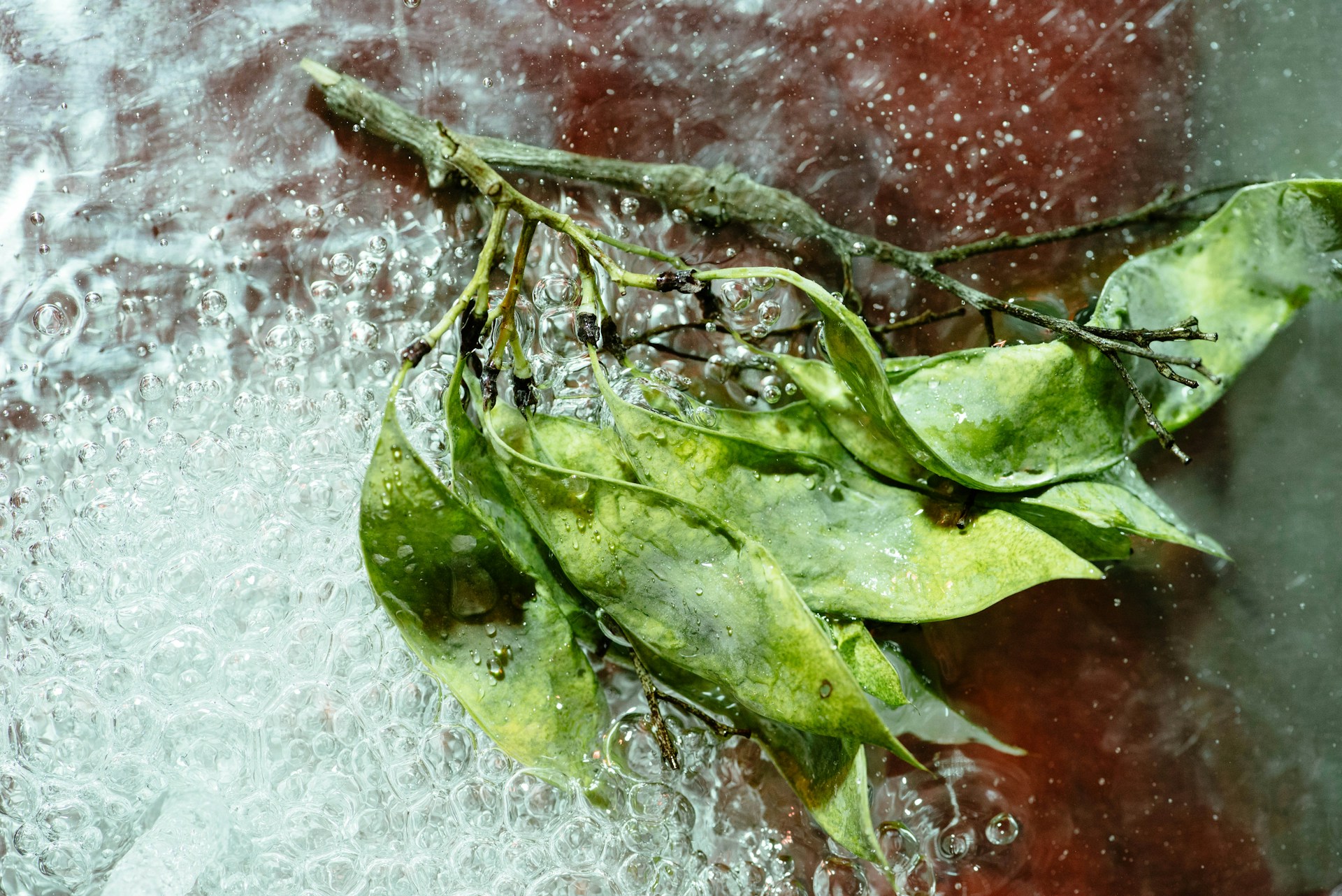
Power grid experts are warning that America’s electrical infrastructure is more vulnerable than ever, and most families who think they’re prepared for emergencies are about to learn a devastating lesson about their food storage plans.
While millions of Americans have stocked their freezers with meat, filled their refrigerators with fresh produce, and loaded their pantries with items requiring refrigeration, few have considered what happens when the power goes out for more than a few hours.
“The average American home loses power for 8 hours per year under normal conditions,” says David Martinez, a former utility grid engineer who now consults on emergency preparedness. “But we’re not living in normal conditions anymore. Grid vulnerabilities from cyberattacks, extreme weather events, and aging infrastructure mean extended outages are becoming the norm, not the exception.”
The numbers tell a sobering story. According to the U.S. Energy Information Administration, major power outages have increased by 67% since 2000. Climate scientists predict this trend will accelerate as extreme weather events become more frequent and severe.
Source: U.S. Energy Information Administration (EIA), ‘Electric Power Annual 2023’ – Data showing major power outages increased 67% from 2000-2023.
What most people fail to realize is that their carefully assembled emergency food supply could become worthless, or worse, dangerous, within hours of a grid failure.
The 4-Hour Window of Disaster
The USDA Food Safety and Inspection Service is clear about the timeline: refrigerated foods become unsafe after 4 hours without power if the refrigerator door remains closed. Frozen foods in a full freezer will stay frozen for approximately 48 hours, but only 24 hours if the freezer is half full.
Source: USDA Food Safety and Inspection Service, ‘Food Safety During a Power Outage’ – Guidelines on refrigerated food safety timelines during power failures.
Dr. Jennifer Walsh, a food safety microbiologist at the University of Wisconsin, explains the danger: “When power fails, bacteria multiply exponentially in the temperature danger zone between 40°F and 140°F. Salmonella, E. coli, and Listeria can double their population every 20 minutes under ideal conditions. By the time food smells bad, bacterial counts can be in the millions per gram.”
Source: Food Microbiology: Fundamentals and Frontiers, 5th Edition (ASM Press) – Bacterial growth rates in temperature danger zone.
For families who have invested hundreds or thousands of dollars in chest freezers full of meat, the financial loss is devastating. But the health risk is even worse.
“We see emergency room visits spike after extended power outages,” says Dr. Michael Chen, an emergency medicine physician in Houston who treated dozens of food poisoning cases after Hurricane Harvey knocked out power for weeks in 2017. “People try to salvage expensive meat from their freezers, thinking they can cook the bacteria away. But many foodborne pathogens produce heat-stable toxins that remain dangerous even after thorough cooking.”
Source: CDC, ‘Hurricane Harvey Health Effects’ – Documentation of foodborne illness increases following extended power outages in 2017.
The Canned Food Deception
Many preppers believe they’ve solved this problem by stockpiling canned goods. After all, canned food doesn’t require refrigeration or power to remain safe.
But nutritionists warn that relying on canned goods during extended emergencies creates its own set of serious problems.
“Canned foods are cooked at extremely high temperatures during the canning process, which destroys significant portions of heat-sensitive vitamins like vitamin C, thiamin, and folate,” explains Dr. Sarah Thompson, a registered dietitian specializing in emergency nutrition. “A family eating primarily canned foods for weeks or months will develop vitamin deficiencies that compromise immune function precisely when they need it most.”
Source: Journal of Food Science, ‘Nutrient Retention in Canned Foods’ (2019) – Study showing vitamin C losses of 50-80% and thiamin losses of 40-70% during thermal processing.
The sodium content in canned foods presents another critical issue. A single can of soup can contain 800-1,500mg of sodium, up to 65% of the daily recommended limit. During a grid-down scenario when medical care may be limited or unavailable, the cardiovascular stress from high-sodium diets becomes particularly dangerous.
Source: American Heart Association, ‘Sodium Content in Processed Foods’ – Analysis showing average canned soup contains 800-1,500mg sodium per serving.
“I’ve reviewed survival food plans where families would be consuming 4,000-6,000mg of sodium daily if they actually ate their stockpiled canned goods,” says Dr. Thompson. “That level of sodium intake increases blood pressure, causes fluid retention, and puts enormous stress on kidneys and heart. For anyone over 50 or with existing health conditions, it’s a recipe for disaster.”
The Freeze-Dried Solution
This is where freeze-dried food technology offers a crucial advantage that most people don’t understand.
Unlike frozen foods that require constant power, or canned foods that sacrifice nutrition for shelf stability, properly processed freeze-dried foods maintain their nutritional value for 25+ years without any refrigeration or power whatsoever.
The science behind freeze-drying explains why. The process removes 98-99% of moisture from food while keeping it frozen, preventing the formation of ice crystals that damage cell walls. Because the food never goes above freezing temperature during processing, heat-sensitive vitamins and nutrients remain intact.
Source: Food Technology Magazine, ‘Freeze Drying Technology and Applications’ (2021) – Technical overview of lyophilization process and nutrient retention.
Independent laboratory testing shows freeze-dried foods retain 90-97% of their original nutritional content, compared to 40-60% retention in canned foods and near-complete loss in frozen foods after power failure.
Source: International Journal of Food Sciences and Nutrition, ‘Comparative Analysis of Food Preservation Methods’ (2020) – Laboratory testing showing nutrient retention across preservation methods.
“The freeze-drying process is remarkable in its ability to preserve not just safety, but actual nutrition,” says food scientist Dr. Robert Hayes of Oregon State University’s Food Innovation Center. “We’ve tested freeze-dried fruits and vegetables stored for 20+ years and found vitamin content that rivals fresh produce in many cases.”
The storage advantages are equally impressive. Freeze-dried foods remain stable at room temperature, require no special storage conditions beyond keeping them dry, and maintain their quality in temperature ranges from below freezing to over 100°F.
Real-World Grid Failure Scenarios
The vulnerability of America’s power grid is not theoretical. Recent events have demonstrated exactly what happens when large populations lose power for extended periods.
During the February 2021 Texas power crisis, over 4.5 million homes and businesses lost power for days during freezing temperatures. Grocery stores were emptied within hours. Frozen food in home freezers spoiled. Families who had stockpiled food in freezers and refrigerators watched their investment rot.
Source: ERCOT (Electric Reliability Council of Texas), ‘2021 Winter Storm Uri Report’ – Official data on power outages affecting 4.5 million customers.
“I had $800 worth of meat in my chest freezer,” recalls Austin resident Tom Anderson. “After three days without power in sub-freezing weather, I had to throw every bit of it away. Meanwhile, my neighbor who had cases of freeze-dried meals just kept eating normally. I learned an expensive lesson.”
Hurricane Maria in 2017 left parts of Puerto Rico without power for 11 months. The average outage lasted 84 days. Frozen and refrigerated foods were worthless within the first week.
Source: Department of Energy, ‘Hurricane Maria Power Restoration Timeline’ – Documentation showing average 84-day outage duration with some areas lasting 11 months.
Even shorter outages create cascading problems. When Hurricane Sandy hit the Northeast in 2012, power outages lasting 7-10 days left families scrambling. Those with freeze-dried food reserves maintained normal nutrition while their neighbors fought over the last canned goods at damaged grocery stores.
Source: FEMA, ‘Hurricane Sandy After-Action Report’ – Analysis of power outage duration and food supply impacts. The Power Grid Threat Assessment
Energy security experts warn that grid vulnerabilities are increasing from multiple threat vectors.
The U.S. Department of Homeland Security has identified the electrical grid as one of the nation’s most critical and most vulnerable infrastructure systems. A 2020 report documented over 150 significant cyberattacks on energy infrastructure globally, with U.S. systems being prime targets.
Source: Department of Homeland Security, ‘Critical Infrastructure Security and Resilience Note’ (2020) – Report on cyber threats to energy infrastructure.
“Our grid was designed for 20th-century threats and loads,” explains former FERC commissioner Robert Powelson. “We’re now dealing with 21st-century cyberattacks, extreme weather events, and exponentially higher demand. The system is stressed in ways it was never designed to handle.”
Physical attacks pose additional risks. In 2013, a coordinated sniper attack on Pacific Gas & Electric’s Metcalf transmission station in California nearly caused a regional blackout. The FBI called it ‘the most significant incident of domestic terrorism involving the grid that has ever occurred.’
Source: Federal Energy Regulatory Commission, ‘Metcalf Substation Attack Report’ (2014) – FBI and FERC analysis of 2013 physical attack on power infrastructure.
Natural disasters present the most frequent threat. According to Climate Central, weather-related power outages have increased 78% since 2011. As climate patterns shift, these events are projected to become more severe and more frequent.
Source: Climate Central, ‘Surging Weather-Related Power Outages’ (2022) – Data analysis showing 78% increase in weather-related outages since 2011.
Beyond Food: The Cascade Effects
When the grid fails, the problems extend far beyond food spoilage.
Water treatment plants typically have 24-48 hours of backup generator fuel. After that, tap water becomes unsafe or stops flowing entirely. Gas stations can’t pump fuel without electricity. Cell towers have limited battery backup before going offline.
“A grid-down scenario becomes a total infrastructure failure within 3-5 days,” warns Martinez. “Food is just the first domino. Water, communications, transportation, and medical services all collapse in sequence.”
This makes the choice of emergency food even more critical. Foods that require extensive preparation, cooking time, or water consumption become problematic when resources are scarce.
Freeze-dried foods offer distinct advantages in these scenarios. Most require only cold or room-temperature water to rehydrate, consuming far less fuel for heating than cooking raw ingredients. The lightweight nature of freeze-dried food means families can evacuate with substantial food supplies if necessary.
The Cost-Benefit Analysis
Critics often point to the higher upfront cost of freeze-dried food compared to canned goods or buying in bulk to freeze. But this analysis ignores the total cost of ownership.
When a family invests $500 in a chest freezer and $1,000 in frozen meat, they’re betting that power will remain reliable. One extended outage can wipe out the entire investment.
Canned goods may cost less initially, but the nutritional deficits mean families may need to supplement with expensive vitamins and minerals. The shorter shelf life of canned goods (typically 2-5 years) means regular rotation and replacement costs that add up over time.
“When you calculate the actual cost per nutritious serving over a 25-year storage period, freeze-dried food is often cheaper than the alternatives,” explains emergency preparedness consultant Maria Rodriguez. “Add in the flexibility of not needing power, and the value proposition becomes obvious.”
The quality difference matters too. Modern freeze-dried meals have evolved far beyond the cardboard-tasting options of decades past. Companies like Freeze Dry Wholesalers are producing restaurant-quality freeze-dried meals that maintain flavor, texture, and nutritional value.
Building a Grid-Independent Food Strategy
Preparedness experts recommend a layered approach to emergency food storage, with freeze-dried foods forming the foundation precisely because they remain viable regardless of grid status.
“Start with a 30-day supply of freeze-dried meals as your baseline,” advises Rodriguez. “These give you guaranteed nutrition for a month no matter what happens with power. Then you can add other food types based on your specific situation and needs.”
The psychological benefit of having truly stable food storage shouldn’t be underestimated. Knowing that your family’s nutritional needs are covered for weeks or months regardless of infrastructure status provides genuine peace of mind.
“Emergency preparedness is as much about maintaining morale and mental health as physical survival,” notes Dr. Chen. “Families who can eat recognizable, tasty meals during a crisis maintain better psychological resilience than those choking down unpalatable rations or rationing spoiling food.”
The Bottom Line for Families
As grid vulnerabilities increase and extreme weather events become more common, the question isn’t whether families should prepare for power outages, but how to prepare most effectively.
The evidence points clearly toward freeze-dried food as the most reliable option for families serious about emergency preparedness. The independence from refrigeration and power, combined with superior nutrition retention and 25+ year shelf life, makes freeze-dried food the logical foundation of any comprehensive emergency food plan.
“We’re not fear-mongering here,” emphasizes Martinez. “We’re looking at documented trends, expert assessments, and real-world events. The grid is becoming less reliable, not more. Families need food storage solutions that account for this reality.”
For families ready to build truly resilient food storage that remains viable regardless of grid status, Freeze Dry Wholesalers offers a comprehensive selection of freeze-dried meals, ingredients, and complete food storage systems designed for long-term reliability.
Their current inventory includes everything from individual freeze-dried meal pouches to complete one-year food supplies for families, all backed by their 30-day satisfaction guarantee.
Don’t wait for the next grid failure to discover whether your emergency food plan will actually work when you need it most.
This editorial contains factual information about power grid infrastructure, food safety, and emergency preparedness. Readers should develop emergency plans appropriate to their specific circumstances and consult with qualified professionals regarding food storage and safety practices.
SOURCES & REFERENCES
• U.S. Energy Information Administration (EIA), ‘Electric Power Annual 2023’ – Major power outages increased 67% from 2000-2023
• USDA Food Safety and Inspection Service, ‘Food Safety During a Power Outage’ – Refrigerated food safety guidelines
• Food Microbiology: Fundamentals and Frontiers, 5th Edition (ASM Press) – Bacterial growth rates in temperature danger zone
• CDC, ‘Hurricane Harvey Health Effects’ – Foodborne illness increases following extended power outages • Journal of Food Science, ‘Nutrient Retention in Canned Foods’ (2019) – Vitamin losses during thermal processing • American Heart Association, ‘Sodium Content in Processed Foods’ – Canned soup sodium analysis • Food Technology Magazine, ‘Freeze Drying Technology and Applications’ (2021) – Lyophilization process overview
• International Journal of Food Sciences and Nutrition, ‘Comparative Analysis of Food Preservation Methods’ (2020) – Nutrient retention study
• ERCOT (Electric Reliability Council of Texas), ‘2021 Winter Storm Uri Report’ – Texas power crisis data • Department of Energy, ‘Hurricane Maria Power Restoration Timeline’ – Puerto Rico outage documentation • FEMA, ‘Hurricane Sandy After-Action Report’ – Power outage and food supply analysis
• Department of Homeland Security, ‘Critical Infrastructure Security and Resilience Note’ (2020) – Cyber threats to energy
• Federal Energy Regulatory Commission, ‘Metcalf Substation Attack Report’ (2014) – Physical attack analysis • Climate Central, ‘Surging Weather-Related Power Outages’ (2022) – 78% increase in weather-related outages
-
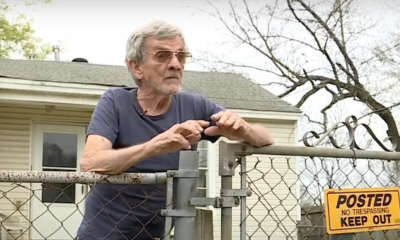
 Tactical2 years ago
Tactical2 years ago70-Year-Old Fends Off Intruder with Lead-Powered Message
-
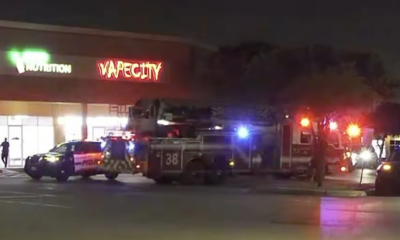
 Tactical2 years ago
Tactical2 years agoVape Shop Employee Confronts Armed Crooks, Sends Them Running
-

 Preparedness1 year ago
Preparedness1 year agoEx-Ballerina’s Guilty Verdict Sends Tremors Through Gun-Owner Community
-
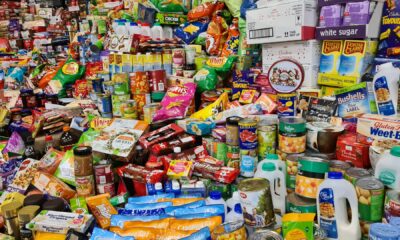
 Off The Grid2 months ago
Off The Grid2 months ago10 Foods That Could Save Your Life When Grocery Shelves Are Empty
-

 Preparedness1 month ago
Preparedness1 month ago5 Things You Should Always Carry During a Winter Storm
-

 Preparedness1 year ago
Preparedness1 year agoGood Samaritan Saves Trooper in Harrowing Interstate Confrontation
-

 Preparedness6 months ago
Preparedness6 months agoHow Much Gasoline Should You Store for Emergencies?
-

 Nature and Wildlife2 months ago
Nature and Wildlife2 months ago10 Survival Skills You Should Learn Before You Need Them
Thomas Moyer
January 10, 2025 at 12:49 pm
The “Justice” system cannot protect the average citizen. In fact, the normal response is not sufficient to prevent the crime. Courts have ruled that the “Government” has no responsibility to protect a “specific” citizen, but the community in general. Thus, it is the responsibility of a specific citizen to protect themselves, their families and their property.
Don
January 10, 2025 at 1:13 pm
I guess the bad guys don’t watch the news. More and more of them are getting shot.
Carol
January 10, 2025 at 2:48 pm
From the news accounts, the armed homeowner perhaps was trigger-happy. He shot and killed his neighbor and will have to live with that the rest of his life.
LMB
January 10, 2025 at 4:00 pm
ANYONE THAT INTRUDES ON/IN YOUR PROPERTY, YOU HAVE THE RIGHT TO CHARGE THEM WITH CRIMINAL TRESPASSING!!! IF THEY REFUSE TO LEAVE, THEN YOU HAVE THE RIGHT TO ESCORT THEM OUT/OFF YOUR PROPERTY BY ANY MEANS NECESSARY!!
CPO Bill
January 11, 2025 at 3:34 pm
Dumb ass asked for it!
Joan
January 11, 2025 at 7:36 pm
He won’t be breaking into any more homes.
Jan
January 12, 2025 at 4:10 am
Play stupid games, get stupid prizes.
Joe Sr B Black
January 12, 2025 at 5:00 pm
I think that an armed homeowner should give the perpetrator a chance to flee, but not at the expense of their safety. But, if once recognized or confronted and they don’t run, then shoot. If they don’t run, it’s pretty clear that they intend to do you harm and you have no obligation to try to determine the extent of that intended harm. Just don’t shoot them in the back, st least not with the first shot!